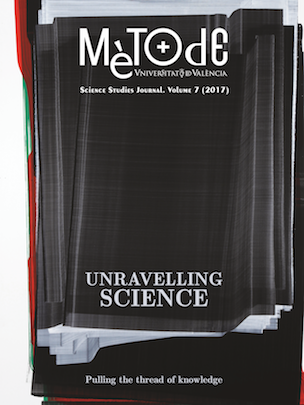The science of difference: The invisibility of women in health sciences
DOI:
https://doi.org/10.7203/metode.7.8155Keywords:
gender and health, differential morbidity, gender perspective, equality, differences Abstract
Abstract
Women remained invisible in health sciences until the late twentieth century because they were not included in the cohorts used in researched studies. Thanks to the work done by different groups of feminist researchers, we were able to visualise the need to change those paradigms. But while gender perspectives have allowed us to research new aspects of science, gender has sometimes contributed to rendering female-specific health issues as invisible. For women to be treated equally, their differences have to be recognised, precisely so that the equal right of both sexes to quality of life can be defended. Therefore, the science of difference should be included in research and taught in all health science specialisations.
 Downloads
Downloads
 References
References
Díaz, C. (2002). Conversational heuristic as a reflexive method for feminist research. International Review of Sociology, 12(2), 249–255. doi: 10.1080/0390670022000012477
Fausto-Sterling, A. (2006). Cuerpos sexuados. Barcelona: Melusina.
Freedman, L. S., Simon, R., Foulkes, M. A., Friedman, L., Geller, N. L., Gordon, D. J., & Mowery, R. (1995). Inclusion of women and minorities in clinical trials and the NIH Revitalization Act of 1993 – The perspective of NIH clinical trialists. Controlled Clinical Trials, 16(5), 277–285.
Harding, S. (1996). Ciencia y feminismo. Madrid: Morata. (Original work published in 1986).
Keller, E. F. (2004). What impact, if any, has feminism had on science? Journal of Bioscience, 29(1), 7–13. doi: 10.1007/BF02702556
Joel, D., Berman, Z., Tavor, I., Wexler, N., Gaber, O., Stein, Y., … Assaf, Y. (2015). Sex beyond the genitalia: The human brain mosaic. Proceedings of the National Academy of Sciences, 112(50), 15468–15473. doi: 10.1073/pnas.1509654112
Pinn, V. W. (2003). Sex and gender factors in medical studies: Implications for health and clinical practice. Journal of the American Medical Association, 289(4), 397–400. doi: 10.1001/jama.289.4.397
Ritz, S. A., Antle D. M., Côté, J., Deroy, K., Fraleigh, N., Messing, K., ... Mergler, D. (2014). First steps for integrating sex and gender considerations into basic experimental biomedical research. The FASEB Journal, 28(1), 4–13. doi: 10.1096/fj.13-233395
Rosser, S. V. (1986). Teaching science and health from a feminist perspective. A practical guide. New York: Pergamon Press.
Sau, V. (2000). Reflexiones feministas para principios de siglo. Madrid: Horas y HORAS.
Tingen, C., Nagel, J. D., & Clayton, J. A. (2013). Monitoring the implementation of the National Institutes of Health Strategic Plan for Women’s Health and Sex/Gender Differences Research: Strategies and successes. Global Advances in Health and Medicine, 2(5), 44–49. doi: 10.7453/gahmj.2013.051
Tomás, C., Yago, T., Eguiluz, M., Samitier, M. L., Oliveros, T., & Palacios, G. (2014). A tool to assess sex-gender when selecting health research projects. Atención Primaria, 1–8. doi: 10.1016/j.aprim.2014.05.010
Verbrugge, L. M. (1985). Gender and health: An update on hypotheses and evidence. Journal of Health and Social Behavior, 26(3), 156–182.
Valls-Llobet, C. (2006). Mujeres invisibles. Barcelona: Debolsillo.
Valls-Llobet, C. (2009). Mujeres, salud y poder. Madrid: Editorial Cátedra.
Downloads
Published
How to Cite
-
Abstract1733
-
PDF568
Issue
Section
License
![]()
All the documents in the OJS platform are open access and property of their respective authors.
Authors publishing in the journal agree to the following terms:
- Authors keep the rights and guarantee Metode Science Studies Journal the right to be the first publication of the document, licensed under a Creative Commons Attribution-NonCommercial-NoDerivatives 4.0 International License that allows others to share the work with an acknowledgement of authorship and publication in the journal.
- Authors are allowed and encouraged to spread their work through electronic means using personal or institutional websites (institutional open archives, personal websites or professional and academic networks profiles) once the text has been published.





